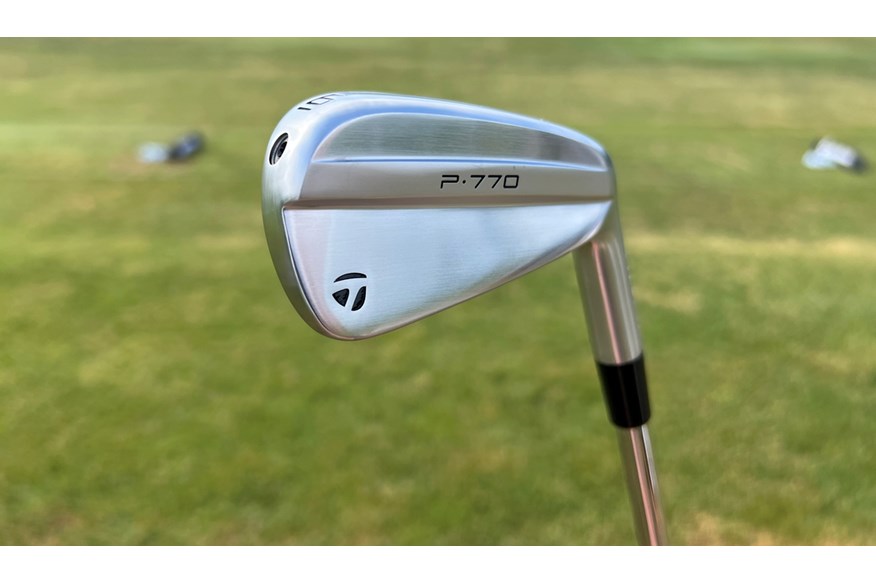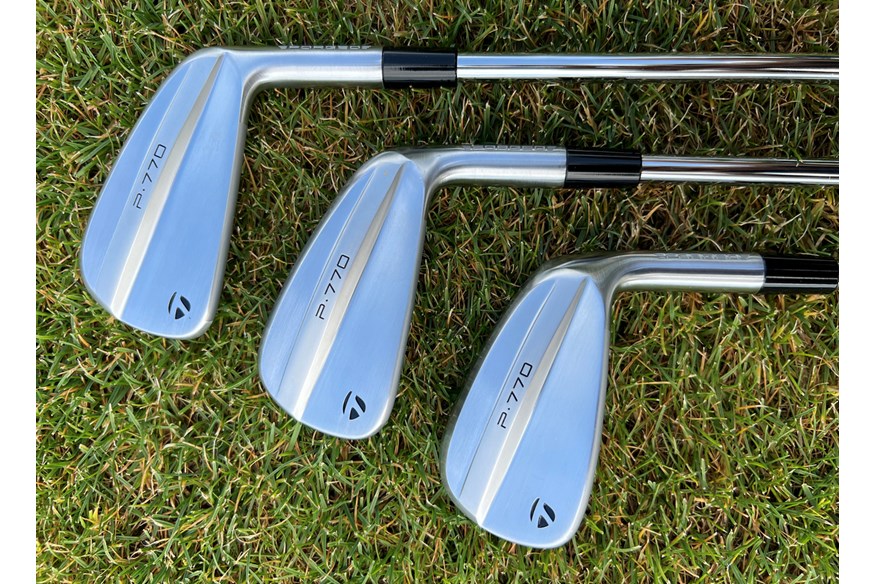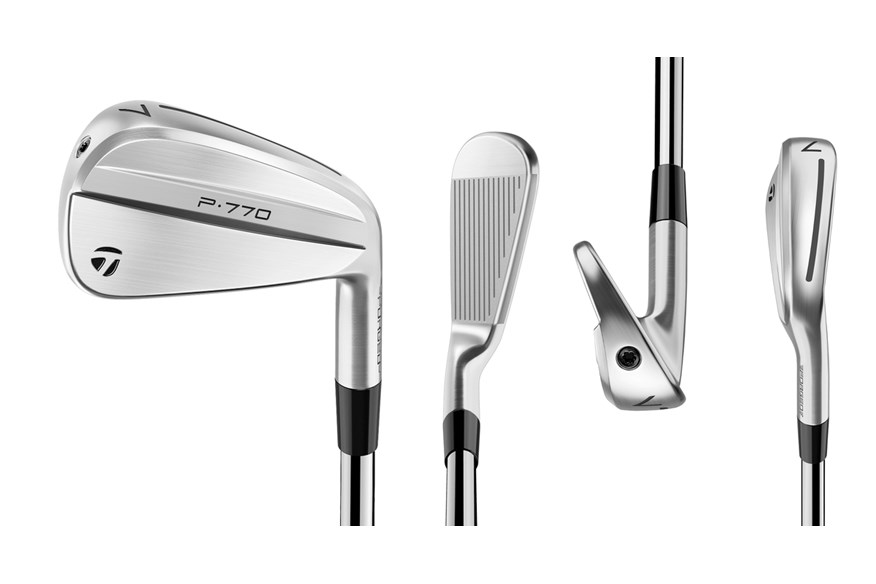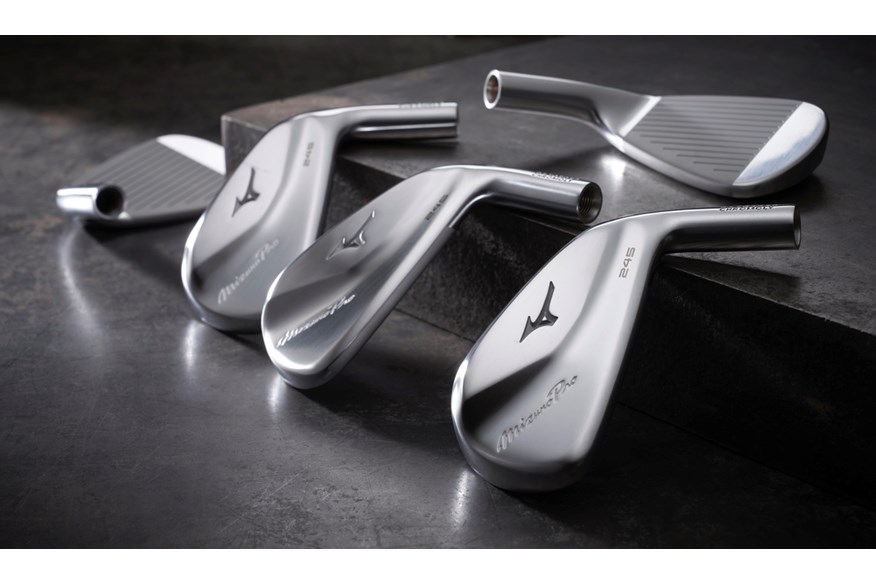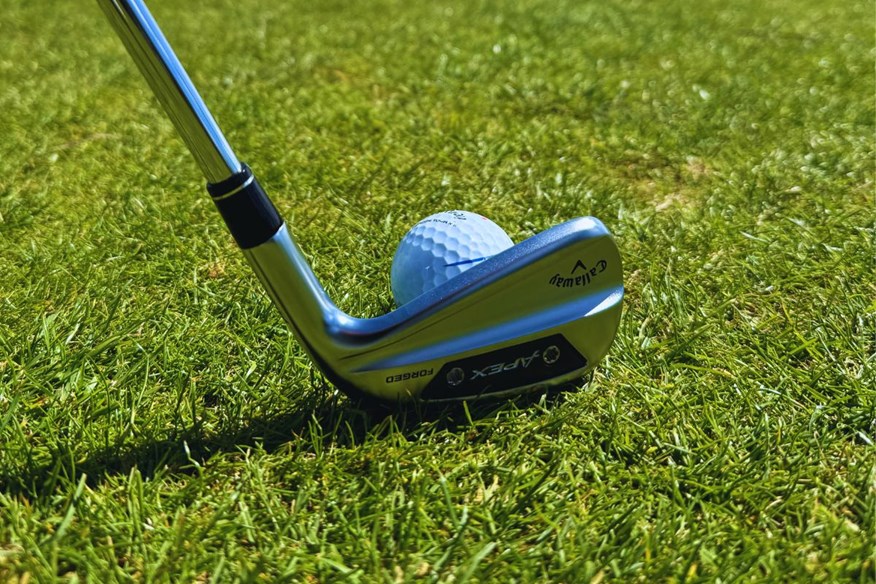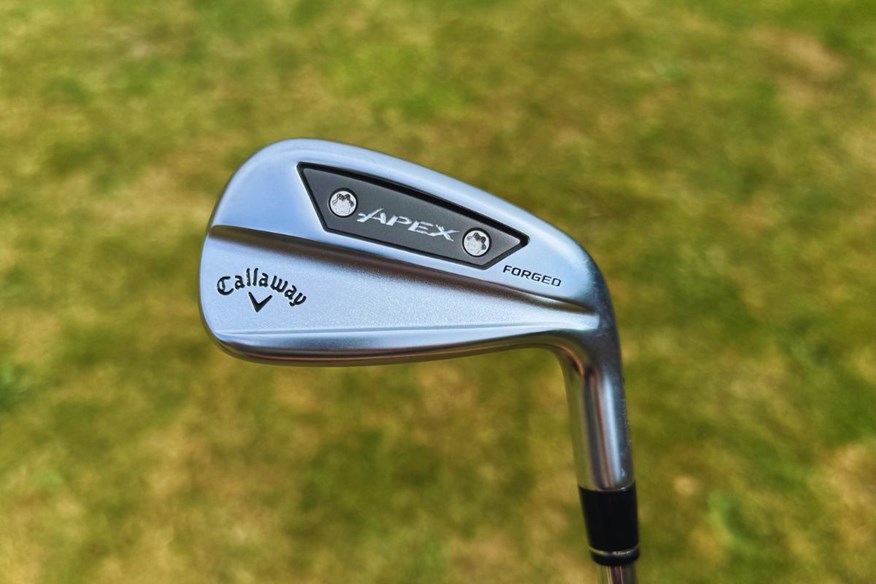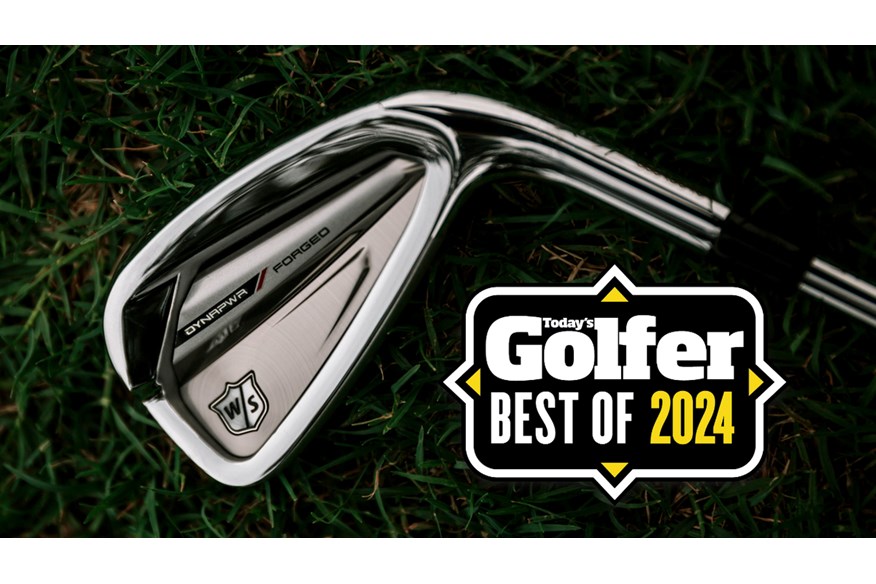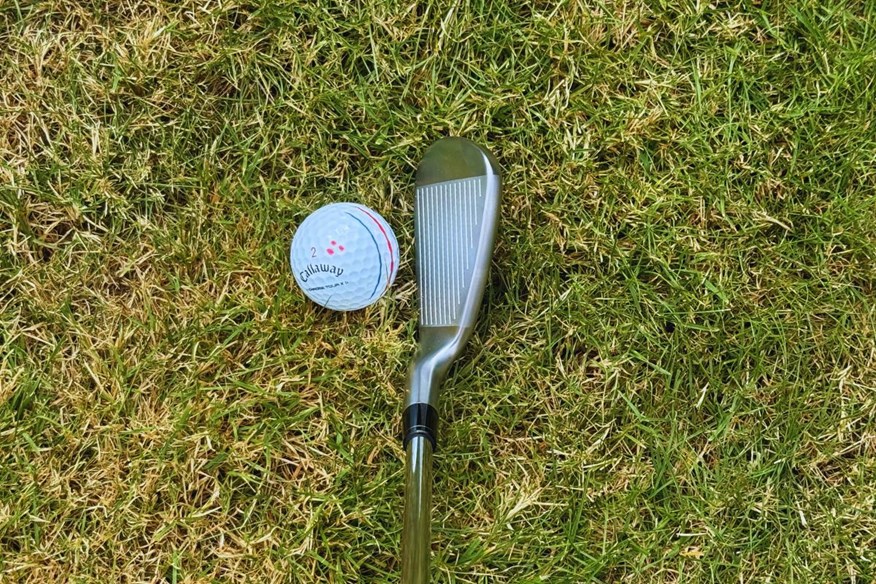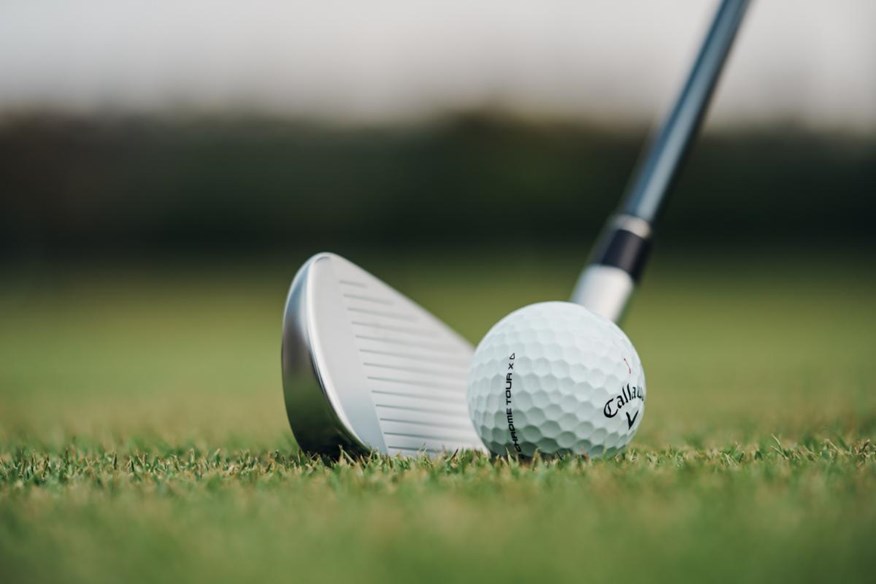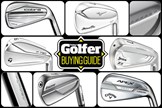Best Forged Golf Irons 2025: The best in feel and performance
Last updated:
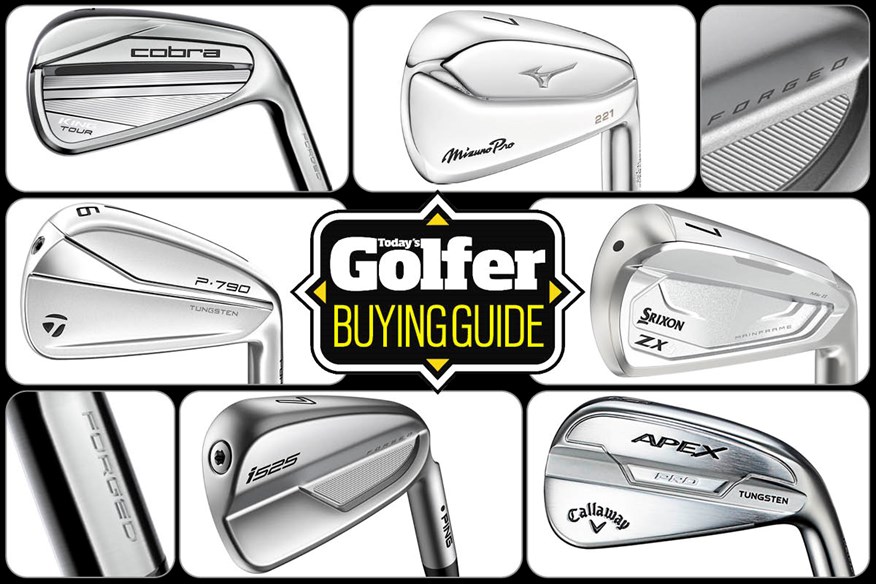
The best forged golf irons offer unrivaled feel and sound, but are they right for your game, and which model should you go for? My head-to-head test will help you pick the best forged iron for your game.
The best forged golf irons have historically been seen as the players’ choice among the best golf irons available. Decades ago forged irons were typically aimed at better players, as their smaller more compact heads and weaker lofts lacked the distance and forgiveness-boosting technologies packed into their cast, less expensive rivals.
Things have changed dramatically though, the best forged golf irons now target delivering additional feel and sound performance to mid and high-handicappers just as much as they do to those using the best players’ distance irons and the best players’ iron models.
If you want the ultimate feel and feedback from your irons, a forged set is likely to be the way to go. To help with your decision-making in this massive category I’ve pulled together a categorized shortlist below of award-winning irons, backed by our test pro’s comparative launch monitor data and accompanying expert verdicts. I suggest reading on so you have a firm understanding of what forged irons can do for you before heading down to my best forged iron picks lower on the page. To maximize your potential I’d seriously recommend committing to a full custom fit session with a suitably qualified professional before making a purchase.
Best Forged Irons – Jump to:
- Best at a glance
- What makes a forged iron?
- Not all forged irons are 100% forged
- Why do so many golfers believe forged irons feel better?
- Are forged irons a premium option?
- Are forged irons only for good players?
- How we test
- The data
- Best forged Muscleback Blades
- Best forged Players’ irons
- Best forged Players’ Distance Irons
- Best forged irons for Mid-Handicap golfers?
- Buying Guide / FAQs
Best at a glance: My top picks from our 2025 award winners
Best Overall Muscleback: Ben Hogan Icon | VIEW OFFER
Second Best Overall Muscleback: Srixon Z-Forged II | VIEW OFFER
Third Best Overall Muscleback: Cobra King MB | VIEW OFFER
Best Muscleback for Max Distance: ProtoConcept C01 TB | VIEW OFFER
Best Overall Players’ Iron: Bettinardi CB24 | VIEW OFFER
Second Best Overall Players’ Iron: Cobra King Tour | VIEW OFFER
Third Best Overall Players’ Iron: Titleist 620 CB | VIEW OFFER
Best Players’ Iron for Dispersion: Titleist 620 CB | VIEW OFFER
Best Players’ Iron for Max Distance: Takomo 201 | VIEW OFFER
Best Overall Players’ Distance Iron: TaylorMade P790 | VIEW OFFER
Second Best Overall Players’ Distance Iron: Ping i530 | VIEW OFFER
Third Best Overall Players’ Distance Iron: ProtoConcept C05 TP | VIEW OFFER
Best Players’ Distance Iron for Max Distance: Ping i530 | VIEW OFFER
Best Players’ Distance Iron for Max Control: TaylorMade P790 | VIEW OFFER
Best forged iron for mid/high handicappers: Titleist T350 | VIEW OFFER
Most forgiving 100% forged iron: Callaway Apex Ai300 | VIEW OFFER
How we tested the best forged golf irons
We asked the leading brands to send us their 2025 forged irons in our test Pro Neil Wain’s specs.
We created an indoor test lab at Keele Golf Centre to ensure a controlled environment, which meant we could use premium TaylorMade TP5x golf balls and a Foresight GC Quad launch monitor to create the most reliable data possible. We rejected major misses but recorded how shots launched, span, peaked out, and how far they flew in which direction.
See more about how TG tests golf clubs and other equipment.
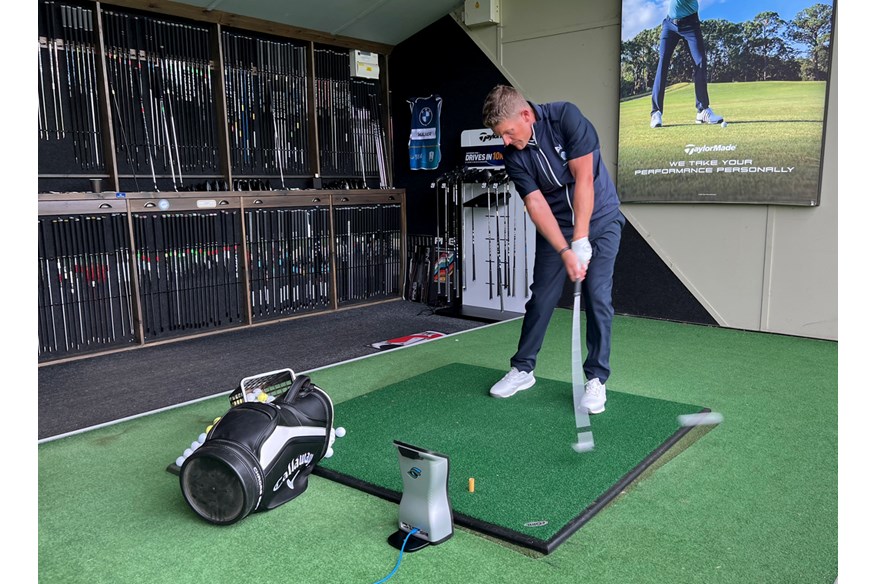
What makes an iron forged?
Ever since Ping introduced their cast cavity back Eye irons in the 60’s and 70’s there’s been a couple of ways to create golf irons. Until Ping arrived on the scene with their super popular ‘cast’ cavity back models, irons were predominantly muscleback blades and stamped into shape using a very heavy press – a forge.
Essentially forging involves a number of stages of stamping and squeezing a hot metal bar (a billet) into tooling to create the head shape a designer wants. Today forged irons (depending on their complexity) regularly go through three to five different size and tool shapes to create their final shape. Each stage involves heating the head and pressing it into shape under the pressure of the heavy forge (2,000 ton presses are not uncommon) which aligns the grain structure of the metal more closely than when molten metal is poured into a cast.
It’s this aligning of the metal’s structure that is said to produce a better feel, less vibration, and an improved sound, all traits often preferred by better players. All forged irons have to have at least one component within the head that’s hit with the forge, but thanks to modern iron construction methods not all forged irons are 100% forged.
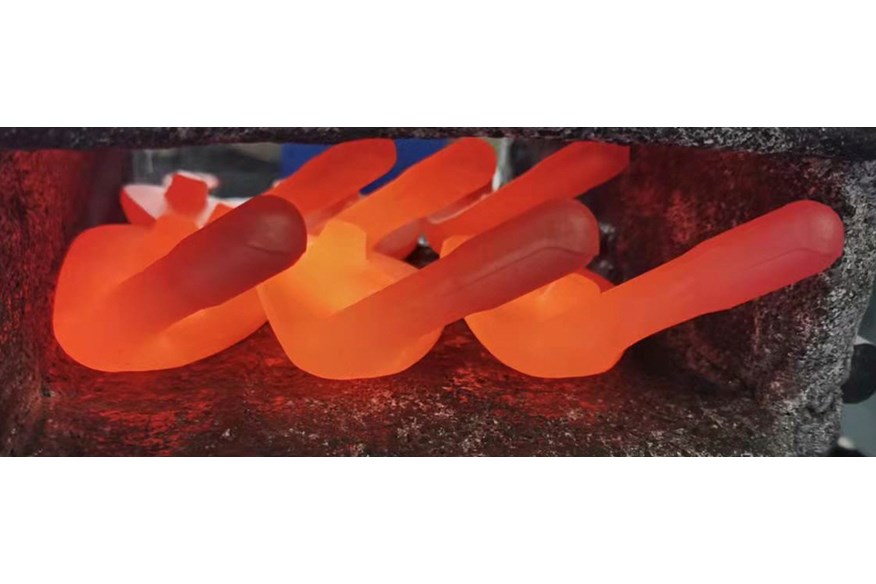
Not all forged irons are 100% forged
Many manufacturers often stamp irons up as forged, as they know tons of golfers perceive forged irons to be of better quality than their cast alternatives, even though studies have shown many of the world’s best golfers struggle to spot forged irons in blind cast vs forged iron tests. Decades ago forged muscleback blade irons lent themselves to being forged in one piece, as their designs were straightforward to create with a heavy forge dropping onto the product vertically from above.
Today’s lots of the best players’ irons are still created in one piece much like blades were decades ago, essentially though this method is pretty crude and inflexible if you’re an iron designer. With the best engineers and designers working out hollow body constructions and thin fast faces bringing additional benefits to golfers lots of modern forged irons aren’t actually 100% forged.
Models like the TaylorMade P7CB, Callaway Apex CB, and PXG 0317 CB are whereas models like the Srixon ZX5 MK II, TaylorMade P790, and Titleist T200 have components that are forged but the whole product isn’t.
There’s some debate around which part of the irons should be forged too. Where the PXG 0311 GEN7 P and TaylorMade P790 have forged bodies models like the Mizuno Pro 245 and Ping i530 have forged faces, so just be aware when you’re buying forged irons it’s highly likely not everything about your new set will be forged.
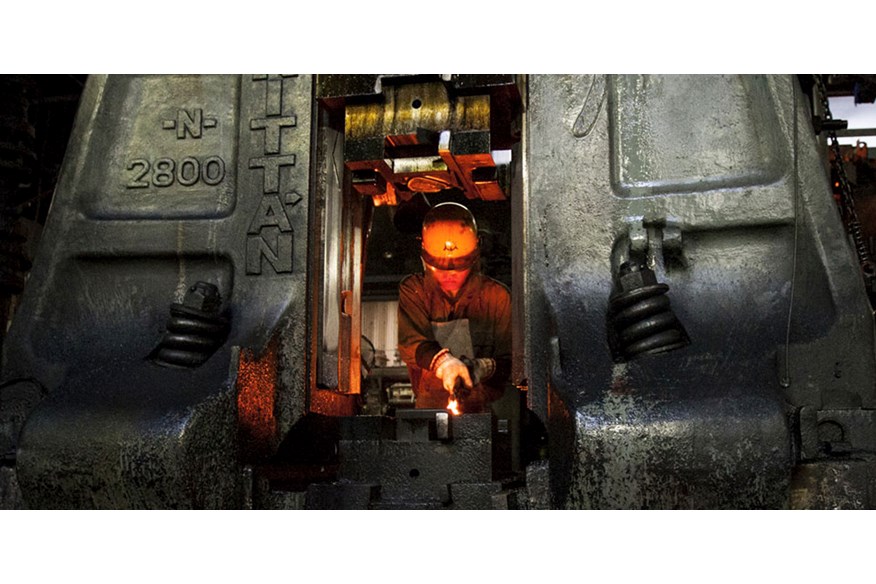
Why do many golfers believe forged irons feel better?
A lot of the myth and legend surrounding the feel and sound of forged irons being better comes down to the tighter alignment of the metal’s grain structure inside, which comes about thanks to the forging process. However, some will argue that sort of thinking used to be more true when irons were forged in single pieces. Today’s multi-piece models often need polymer fillers to support the face (so it won’t cave in) and manage vibration so golfers get the feel and sound frequencies most commonly associated with forged irons.
Of course, with well over 95% of tour events being won by players who earn their crust using forged irons (most are one-piece forged models) there will always be an air of superiority attached to the category too.
Are forged irons a premium option?
Often the price of forged irons will be higher than their cast equivalent. Where the TaylorMade part forged P790 is $1299 for a 7-piece set, the brand’s cast Qi set is over $200 cheaper at $1099. Just because forged irons typically cost more do not think cast irons are in any way inferior, in fact, their designs can often be much more varied thanks to their production method.
A lot of the extra costs of forged irons go into the tooling, with complex irons like the PXG 0311 GEN7 XP needing five sets of expensive and carefully machined tools for producing each iron (that’s 40 tools for an eight-piece set), where cast models need just one for each head in the set.
Forged irons don’t always have to be expensive options. Direct to Consumer brands like Takomo and Ben Hogan produce much more reasonably priced forged sets too. Thanks to being predominantly sold online though you will need to know what you want as fitting often isn’t readily available.
Are forged irons only for good players?
Absolutely not, forged irons are for anybody who feels there’s a benefit to paying for their supposed extra feel and sound performance. Whereas years ago players’ irons were predominantly forged, today it’s just as possible to find great forged models in the best players’ distance iron category as it is within the best mid-handicappers iron arena. Our most forgiving forged iron page will help you identify which models are most playable on the golf course.
Best Forged Golf Irons 2025: The Data
How the Best Forged Blade Irons compare in data (Test Pro data):
| Make | Model | Loft (º) | Club Speed (mph) | Ball Speed mph) | Carry Distance (yds) | Spin Rate (rpm) | Launch Angle (°) | Peak Height (yds) | Descent Angle (°) | L-R Dispersion |
| Ben Hogan | Icon | 34 | 89.4 | 117.9 | 169.9 | 5,561 | 17.8 | 31.0 | 46.4 | 5.1 |
| Bettinardi | MB 24 | 33 | 90.3 | 119.4 | 167.7 | 6,487 | 17.7 | 32.3 | 47.9 | 4.8 |
| Callaway | Apex MB | 34 | 88.7 | 113.9 | 161.9 | 5,798 | 18.7 | 30.2 | 46.3 | 10.3 |
| Cobra | King MB | 34 | 91.3 | 118.5 | 167.9 | 6,031 | 18.2 | 32.5 | 47.8 | 2.4 |
| Mizuno | Pro 241 | 34 | 88.4 | 115.3 | 165.3 | 5,625 | 19.3 | 32.0 | 47.3 | 6.9 |
| Ping | Blueprint T | 33 | 88.6 | 115.5 | 166.7 | 5,369 | 18.6 | 30.8 | 46.2 | 8.3 |
| ProtoConcept | C01 TB | 32 | 92.7 | 123.0 | 177.8 | 5,513 | 16.4 | 31.8 | 46.8 | 11.0 |
| PXG | 0317 ST | 33 | 87.1 | 113.7 | 163.9 | 5,239 | 19.4 | 30.9 | 46.1 | 5.1 |
| Srixon | Z-Forged II | 33 | 89.8 | 118.5 | 172.1 | 5,378 | 18.5 | 32.5 | 46.8 | 8.1 |
| Takomo | 301 MB | 34 | 90.3 | 121.2 | 170.3 | 6,554 | 16.7 | 31.9 | 47.6 | 8.6 |
| TaylorMade | P7MB | 34 | 90.0 | 117.1 | 161.5 | 7,213 | 16.6 | 29.5 | 46.6 | 4.8 |
| Titleist | 620 MB | 35 | 89.4 | 116.6 | 166.4 | 5,856 | 19.3 | 32.8 | 47.5 | 6.9 |
| Wilson | Staff Model Blade | 34 | 86.4 | 113.7 | 163.9 | 5,181 | 18.1 | 28.7 | 44.9 | 13.0 |
| Category | Average | N/A | 89.4 | 117.2 | 167.3 | 5,831 | 18.1 | 31.3 | 46.8 | 7.3 |
| Test | Average | N/A | 90.2 | 120.2 | 175.1 | 5,327 | 17.6 | 31.9 | 46.4 | 9.7 |
How the best Forged Players’ Irons compare in data (Test Pro data):
| Make | Model | Loft (º) | Club Speed (mph) | Ball Speed mph) | Carry Distance (yds) | Spin Rate (rpm) | Launch Angle (°) | Peak Height (yds) | Descent Angle (°) | L-R Dispersion |
| Ben Hogan | PTX Tour | 33.5 | 89.2 | 116.8 | 167.8 | 5,606 | 19.0 | 32.4 | 47.2 | 8.9 |
| Bettinardi | CB 24 | 33 | 90.8 | 120.9 | 170.7 | 6,349 | 17.6 | 33.1 | 48.2 | 4.7 |
| Callaway | Apex CB | 34 | 90.4 | 114.2 | 163.0 | 5,629 | 19.4 | 31.5 | 47.0 | 9.9 |
| Cobra | King Tour | 32 | 92.0 | 122.1 | 175.1 | 5,759 | 17.8 | 33.8 | 47.9 | 7.8 |
| Mizuno | Pro 243 | 32 | 89.6 | 118.7 | 171.3 | 5,599 | 18.9 | 33.4 | 47.6 | 5.4 |
| Mizuno | Pro S-3 | 34 | 89.1 | 115.4 | 165.8 | 5,530 | 19.1 | 31.6 | 46.9 | 13.0 |
| Ping | Blueprint S | 33 | 89.1 | 118.3 | 171.1 | 5,415 | 18.2 | 31.7 | 46.7 | 16.2 |
| Ping | i230 | 33 | 88.7 | 117.2 | 169.9 | 5,308 | 18.6 | 31.7 | 46.6 | 7.8 |
| ProtoConcept | C03 TC | 32 | 92.1 | 120.7 | 173.1 | 5,709 | 17.1 | 31.8 | 46.9 | 10.0 |
| PXG | 0317 T | 32 | 87.9 | 115.8 | 168.0 | 5,150 | 18.2 | 30.2 | 45.4 | 9.0 |
| PXG | 0317 CB | 33 | 88.2 | 115.4 | 166.9 | 5,213 | 18.6 | 30.4 | 45.8 | 15.3 |
| Srixon | ZXi7 | 32 | 89.9 | 118.2 | 172.8 | 5,056 | 18.1 | 31.4 | 46.0 | 12.7 |
| Takomo | 201 | 32 | 90.7 | 122.1 | 174.4 | 5,922 | 16.1 | 30.9 | 46.5 | 1.7 |
| Takomo | 301 CB | 34 | 90.1 | 120.6 | 169.3 | 6,566 | 17.4 | 32.6 | 48.2 | 12.8 |
| TaylorMade | P7CB | 33 | 92.2 | 120.7 | 168.9 | 6,669 | 16.3 | 30.7 | 47.3 | 8.9 |
| Titleist | T150 | 32 | 89.2 | 119.8 | 175.8 | 5,047 | 18.1 | 32.3 | 46.2 | 10.5 |
| Titleist | T100 | 34 | 89.5 | 117.0 | 167.9 | 5,641 | 18.9 | 32.3 | 47.0 | 11.7 |
| Titleist | 620 CB | 35 | 90.2 | 117.3 | 167.0 | 6,020 | 18.8 | 32.6 | 47.3 | 3.2 |
| Wilson | Staff Model CB | 34 | 86.9 | 116.7 | 169.1 | 5,233 | 18.1 | 30.4 | 45.9 | 12.1 |
| Category | Average | N/A | 89.8 | 118.3 | 169.9 | 5,654 | 18.1 | 31.8 | 46.9 | 9.6 |
| Test | Average | N/A | 90.2 | 120.2 | 175.1 | 5,327 | 17.6 | 31.9 | 46.4 | 9.7 |
How the best Forged Players’ Distance Irons compare in data (Test Pro data):
| Make | Model | Loft (º) | Club Speed (mph) | Ball Speed mph) | Carry Distance (yds) | Spin Rate (rpm) | Launch Angle (°) | Peak Height (yds) | Descent Angle (°) | L-R Dispersion |
| Callaway | Apex Pro | 33 | 89.1 | 116.3 | 169.7 | 4,984 | 18.3 | 30.4 | 45.7 | 12.2 |
| Cobra | King Tec | 29.5 | 93.3 | 123.3 | 179.0 | 5,373 | 16.2 | 31.4 | 46.1 | 8.4 |
| Fourteen | TB5 | 30 | 93.6 | 125.4 | 184.5 | 5,075 | 15.9 | 31.9 | 46.1 | 12.6 |
| Mizuno | JPX 925 Forged | 30 | 89.9 | 121.0 | 180.9 | 4,576 | 18.0 | 32.5 | 45.9 | 5.8 |
| Mizuno | Pro 245 | 30 | 90.1 | 119.3 | 174.5 | 5,181 | 18.2 | 32.4 | 46.5 | 6.4 |
| Ping | i530 | 29 | 90.3 | 123.5 | 184.8 | 4,686 | 17.5 | 33.3 | 46.1 | 5.7 |
| ProtoConcept | C05 TP | 32 | 93.3 | 122.0 | 175.9 | 5,559 | 17.6 | 33.3 | 47.6 | 4.8 |
| PXG | GEN7 P | 30 | 89.1 | 120.6 | 179.4 | 4,706 | 18.4 | 33.1 | 46.2 | 10.5 |
| Srixon | ZXi5 | 31 | 90.5 | 122.0 | 182.9 | 4,539 | 17.8 | 32.8 | 45.7 | 10.0 |
| Takomo | 101 T | 32 | 91.8 | 120.9 | 171.3 | 6,167 | 17.6 | 32.9 | 48.4 | 13.7 |
| TaylorMade | P790 | 30 | 92.3 | 124.9 | 179.5 | 5,856 | 16.8 | 33.9 | 47.9 | 2.7 |
| TaylorMade | P770 | 33 | 91.0 | 120.1 | 167.6 | 6,780 | 16.6 | 31.1 | 47.4 | 6.8 |
| Titleist | T200 | 30.5 | 89.7 | 121.7 | 180.3 | 4,887 | 17.3 | 32.0 | 45.5 | 12.9 |
| Wilson | Dynapower Forged | 30.5 | 89.6 | 121.4 | 179.8 | 4,849 | 17.1 | 31.3 | 45.3 | 21.9 |
| Category | Average | N/A | 90.6 | 121.1 | 177.0 | 5,253 | 17.6 | 32.3 | 46.5 | 9.6 |
| Test | Average | N/A | 90.2 | 120.2 | 175.1 | 5,327 | 17.6 | 31.9 | 46.4 | 9.7 |
How the best Forged Mid-Handicap Irons compare in data (Test Pro data):
| Make | Model | Loft (º) | Club Speed (mph) | Ball Speed (mph) | Carry Distance (yds) | Spin Rate (rpm) | Launch Angle (º) | Peak Height (yds) | Descent Angle (º) | L-R Dispersion (yds) |
| Callaway | Ai 200 | 30 | 89.3 | 121.5 | 180.0 | 4,843 | 17.4 | 32.0 | 45.6 | 9.9 |
| Callaway | Ai 300 | 29 | 88.7 | 121.4 | 180.8 | 4,671 | 17.1 | 31.2 | 45.1 | 13.0 |
| Srixon | ZXi4 | 28.5 | 91.3 | 124.0 | 186.7 | 4,521 | 17.4 | 33.4 | 45.7 | 6.1 |
| Titleist | T350 | 29 | 89.1 | 122.1 | 184.7 | 4,299 | 18.0 | 32.9 | 45.6 | 31.1 |
Let me introduce the best forged golf irons money can buy…
Best Forged Blade Irons 2025:
Best Muscleback Iron 2025 & Best Muscleback Iron for High Flight 2025
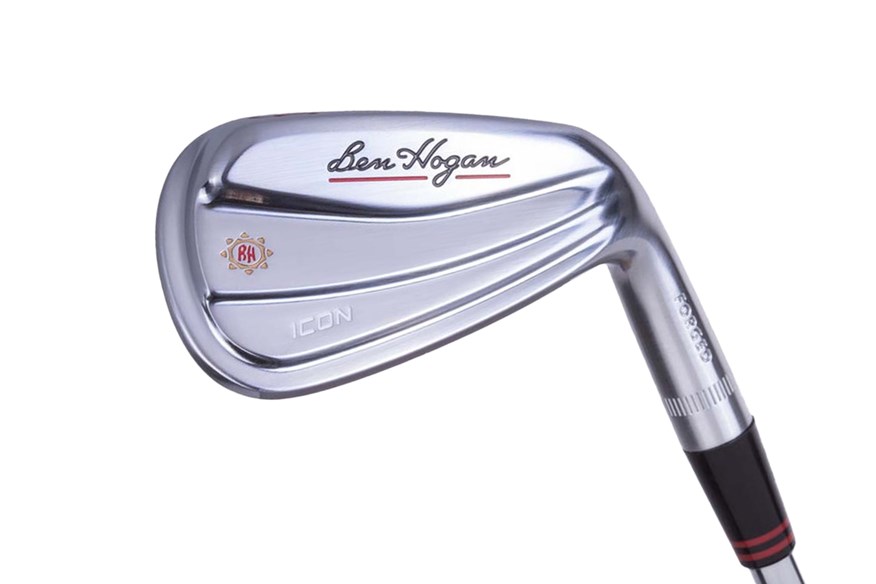

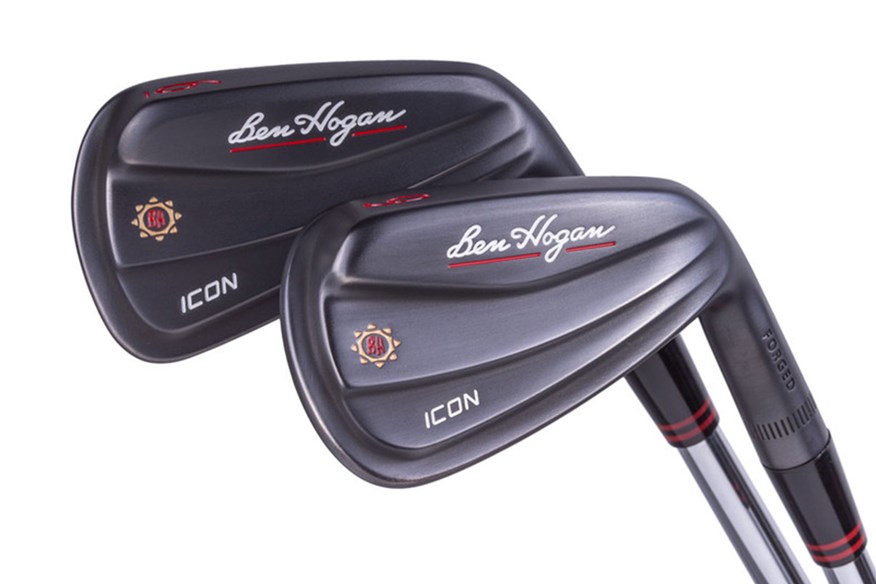
Ben Hogan, the golfer, was one of the most interesting and greatest players the game's ever seen. A multiple major winner who inspired many with his own game, he then helped pass on to the great golfing public through both instructionals (Hogan’s 5 Lessons book still provides key fundementals for PGAs and amateurs to this day) and then through designing his own equipment.
The equipment bearing his name today should live up to his iconic status, and we’re happy to say it does! The Icon iron carries a throwback look to the original BH company designs, while innovating where it can (this is still a blade, after all) with its progressive weighting system helping to make this more playable than your average butter knife.
Outstandingly consistent in our standard deviation measurements while sitting strongly within every measured average, we’re glad to show the Ben Hogan Icon as being one of the best Muscleback irons in the game today. Mr Hogan would be proud!
What our tester says:
Wow! This really is a blast from the past! It’s great to see some of these legendary names making comebacks and getting recognition in today’s game, and the Icon iron is all kinds of good-looking. For a blade, it gets through the ground really well, and I like that there’s some extra bounce from the sole to make the club glide through the turf more easily.
Data:
Loft 34º | Clubhead Speed 89.4 MPH | Ball Speed 117.9 MPH | Carry 169.9 Yards | Spin 5,561 RPM | Launch 17.8º | Height 31 Yards | Descent Angle 46.4º | L-R Dispersion 5.1 Yards
| Set Options | 4-PW |
| Stock Shaft | KBS Tour Lite / True Temper Dynamic Gold 105 |
| Stock Grip | Lamkin Z5 Black |
| Left Handed | No |
Second Best Muscleback Iron 2025
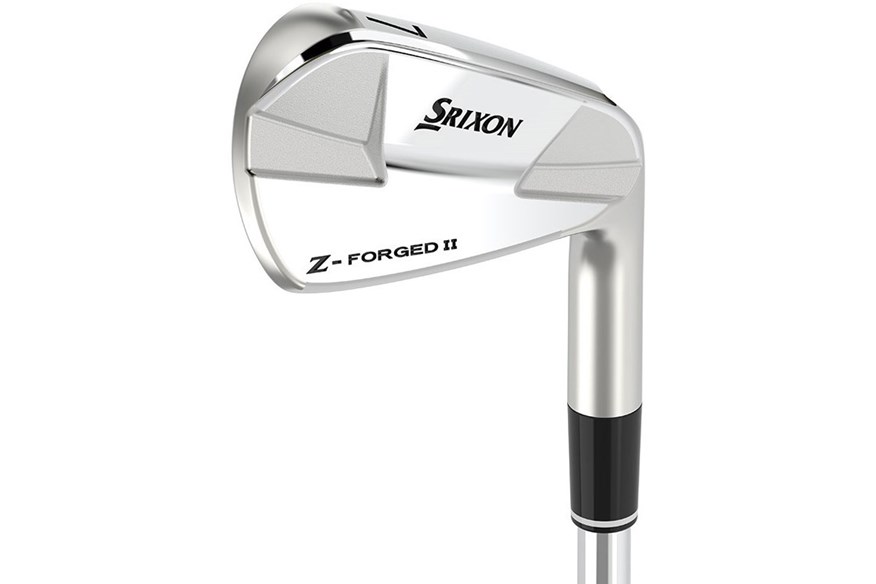

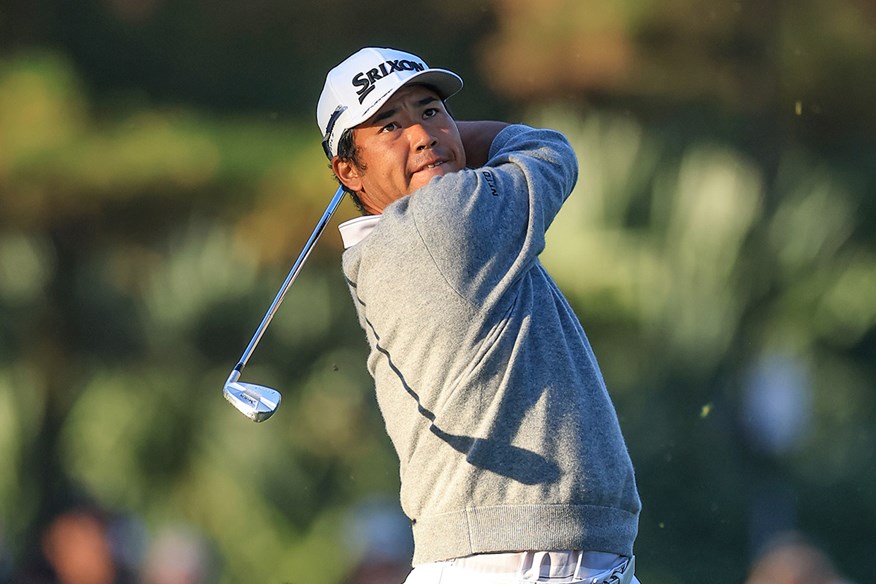
Sometimes, you just have to sit back and enjoy the moment. That’s the feeling Srixon’s Z-Forged II blade conjures up for us – something you can take pleasure in rather than worrying about anything beyond the strike.
While you could make an argument for any MB to be able to do this, we’re particularly enamoured with the Srixon Z-Forged II. There’s some jump to be found in the ball flight as well, with some added distance coming through during our testing, but the real benefit to be found is with Srixon’s VT sole.
The VT Sole can cut into strong ground as well as soft, without getting stuck. This needs to be felt to be believed, but it makes contact much easier in the Srixon iron.
What our tester says:
The shape feels like something of a throwback to some older iron sets, but I’m really taken by the power it seems to have for a muscleback iron. It still feels so soft. I wasn’t expecting to find both of these attributes at the same time in an MB iron.
Data:
Loft 33º | Clubhead Speed 89.8 MPH | Ball Speed 118.5 MPH | Carry 172.1 Yards | Spin 5,378 RPM | Launch 18.5º | Height 32.5 Yards | Descent Angle 46.8º | L-R Dispersion 8.1 Yards
| Set Options | 3-PW |
| Stock Shaft | Nippon NS Pro Modus Tour 120 |
| Stock Grip | Golf Pride Tour Velvet 360 |
| Left Handed | No |
Third Best Muscleback Iron 2025
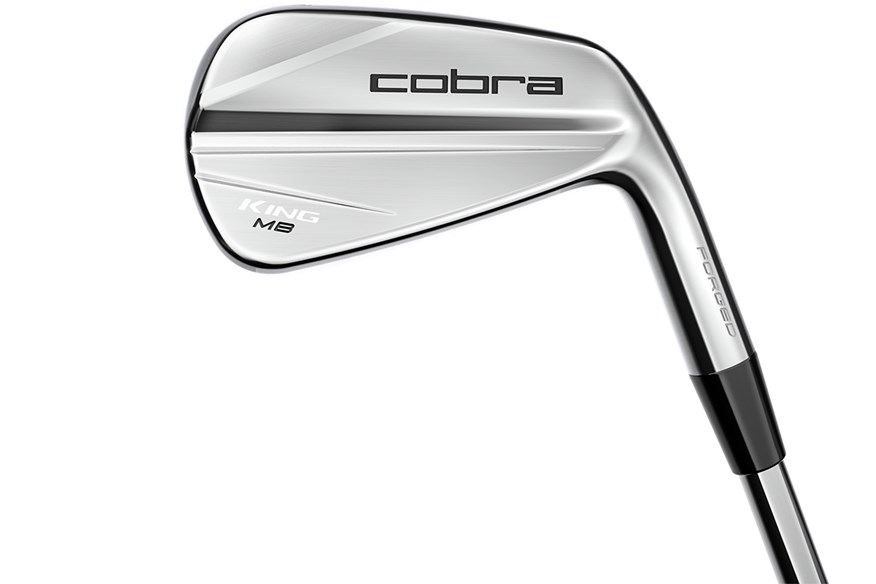


We love the King MB performance at Today’s Golfer. The design is a great blend of classic blade and modern aesthetic, with sharp edges around the entire head, with logos being obvious for branding without being obtrusive.
We always expect consistency from the performance of musclebacks (why else would you punish yourself with these models otherwise?), but the Cobra King MB has been particularly solid in how tightly its attributes have grouped together.
What our tester says:
The biggest thing shouting out to me with the King MB is how well it looks like it could be blended with the King Tour. I don’t know how I feel about playing with a bladed 4-iron, but a combination of the two feels like a deadly pairing.
Data:
Loft 34º | Clubhead Speed 91.3 MPH | Ball Speed 118.5 MPH | Carry 167.9 Yards | Spin 6,031 RPM | Launch 18.2º | Height 32.5 Yards | Descent Angle 47.8º | L-R Dispersion 2.4 Yards
| Set Options | 3-PW, GW |
| Stock Shaft | KBS $-Taper |
| Stock Grip | Lamkin Crossline |
| Left Handed | Yes |
Best Forged Players’ Irons 2025
Best Players Cavity Iron 2025
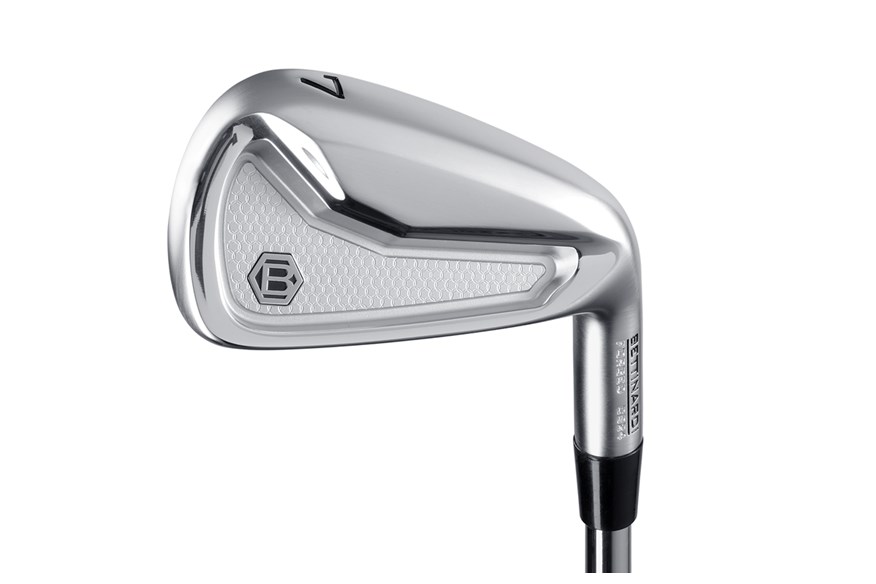

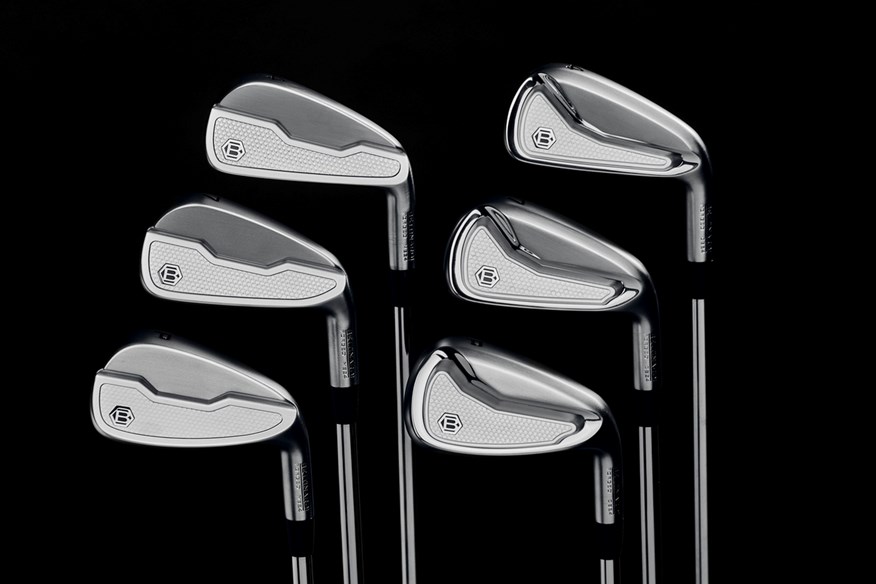
If you know the name Bettinardi, you might be surprised to see it listed here amongst irons. The company has spent years being known for making some of the most exclusive and stunning putters in the world, crafted within their own factory in the US.
Bettinardi have toyed and created some sublime wedges in recent years, in addition to their putter lines, but the irons have seemingly slotted right into their family without any difficulty – the missing piece of the puzzle, perhaps?
All we know is the Bettinardi CB24 has taken the Players Cavity category by storm, with great ball speeds and higher spin helping to produce serious stopping power on the greens. Coupled with a L-R dispersion that is half the category average, we’re more than happy to say the CB24 is a worthy contender against any company’s offerings.
What our tester says:
You wonder if companies like this are just cashing in on their name sometimes, but the CB24 lives up to the Bettinardi brand! It’s got some great looks, smooth and clean, and there’s a bit of liveliness to the way the ball feels off the face. I like it a lot.
Data:
Loft 33º | Clubhead Speed 90.8 MPH | Ball Speed 120.9 MPH | Carry 170.7 Yards | Spin 6,349 RPM | Launch 17.6º | Height 33.1 Yards | Descent Angle 48.2º | L-R Dispersion 4.7 Yards
| Set Options | 4-PW |
| Stock Shaft | True Temper Dynamic Gold Mid 100 |
| Stock Grip | Golf Pride Tour Velvet |
| Left Handed | Yes |
Second Best Players Cavity Iron 2025
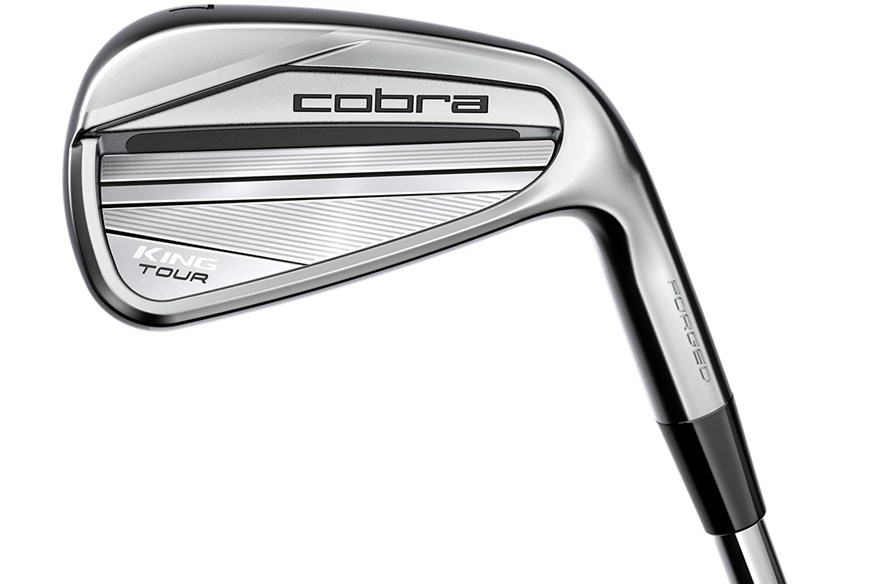

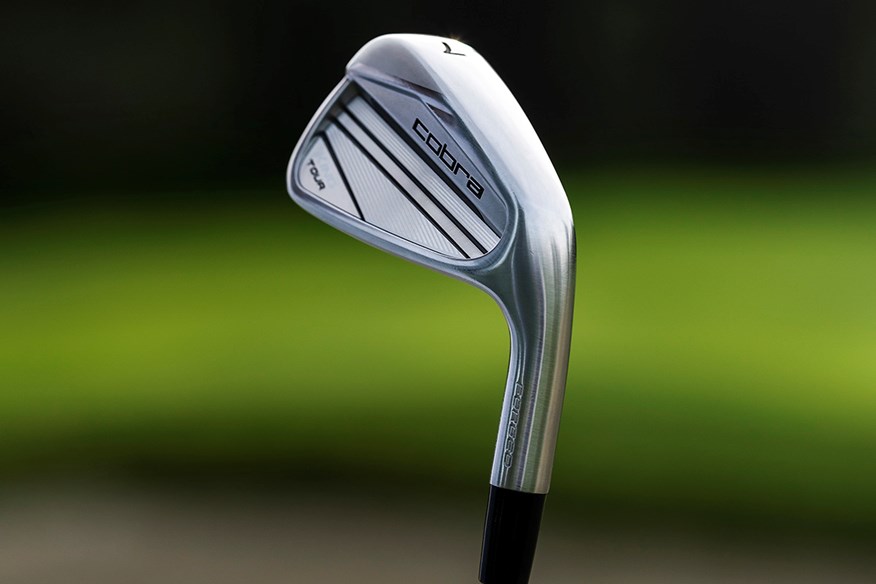
Another extremely impressive iron from Cobra – the company are certainly on a roll in 2025! The King Tour narrowly missed out on the very top spot in the Players Cavity category, offering strong distance while also maintaining good height and descent angles for control into the greens.
With several tour pros having gamed a set throughout the last 18 months, including non-staffer Justin Rose, there’s a real sense that Cobra are not just ready but chomping at the bit for a chance to take on some of the bigger, established names in every iron category.
The shaping of the Cobra King Tour lends itself to the category it’s in, with minimal offset, straight edges where you want them but curves where they’re needed, with a more rounded sole camber that negotiates well with any turf condition.
What our tester says:
Just like the Forged Tec, there's really clean styling to the Tour iron. It catches my eye nicely, with some great straight lines on the leading edge and topline, but nothing that intimidates me.
Data:
Loft 32º | Clubhead Speed 92 MPH | Ball Speed 122.1 MPH | Carry 175.1 Yards | Spin 5,759 RPM | Launch 17.8º | Height 33.8 Yards | Descent Angle 47.9º | L-R Dispersion 7.8 Yards
| Set Options | 3-PW, GW |
| Stock Shaft | KBS $-Taper |
| Stock Grip | Lamkin Crossline |
| Left Handed | Yes |
Third Best Players Cavity Iron & Best Players Cavity Iron for Dispersion 2025
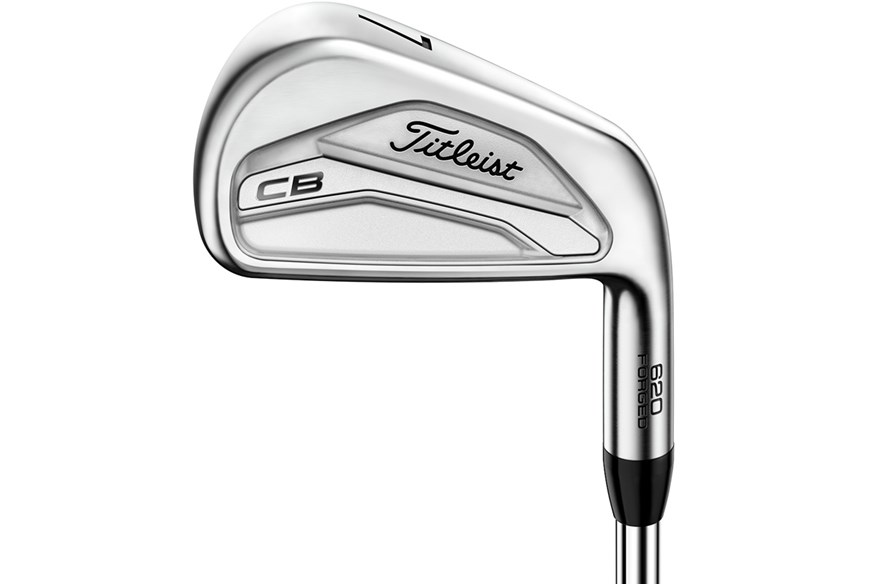

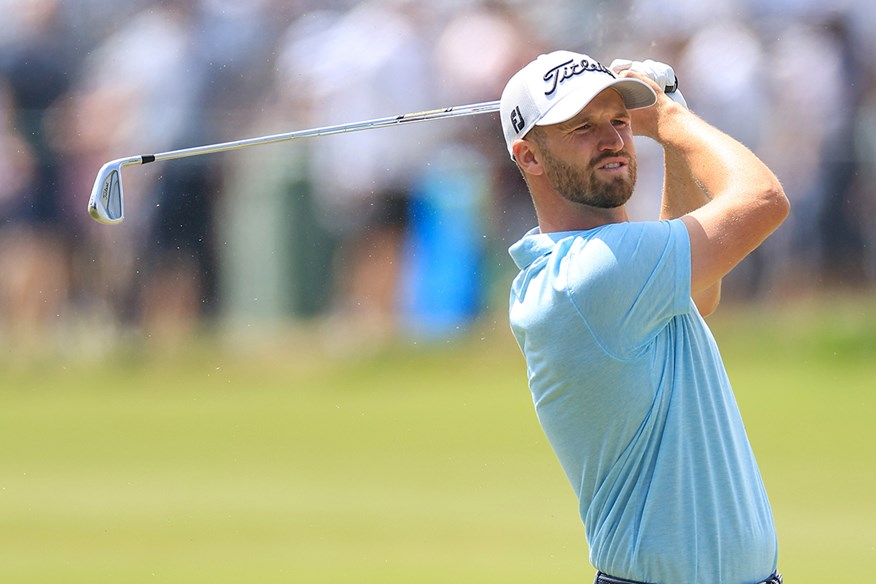
Titleist’s 620 CB doesn’t get quite the same promotion as the T100, but this iron has managed to carve itself a little niche with some really impressive players – both Wyndham Clark and Brian Harman used the 620 CB to win major championships in 2023!
The 620 CB has minimal technology; this is a very traditional Cavity iron because there’s an emphasis on this being for golfers who are only looking for a fraction of change over the 620 MB.
There’s a subtle difference in the sole between the two, with more camber in the 620 CB for a change of turf interaction. Hitting both will be the best way to determine which one suits you best.
What our tester says:
The back of the 620 CB looks, surprisingly, quite tech-y for what it is. While that’s not completely to my liking, the feel and the feedback absolutely is! The 620 CB doesn’t seem to ‘stick’ in the ground quite as much as the MB, and that definitely suits what I want at impact.
Data:
Loft 35º | Clubhead Speed 90.2 MPH | Ball Speed 117.3 MPH | Carry 167 Yards | Spin 6,020 RPM | Launch 18.8º | Height 32.6 Yards | Descent Angle 47.3º | L-R Dispersion 3.2 Yards
| Set Options | 3-PW |
| Stock Shaft | True Temper Project X LZ |
| Stock Grip | Golf Pride Tour Velvet 360 |
| Left Handed | Yes |
Best Players Cavity Iron for High Flight 2025
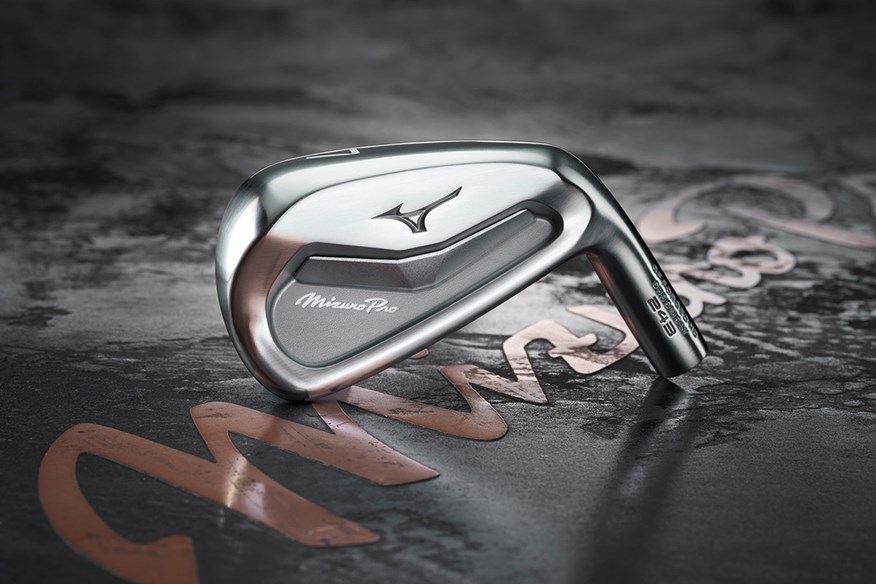


The Mizuno Pro 243 is meant to fill the gap for the golfer who wants to play a classic muscleback, whether through desire or familiarity, but knows they need a little more assistance.
There’s a multi-material construction featured in the 243’s 4-7 irons, built to help lower CG to protect ball speed on low-face strikes as well as make the ball launch higher. The 8-GW are made from mild carbon steel that’s been through Mizuno’s HD Grain Flow Forged process to create the iconic feedback you expect from the brand.
The 243’s changes from being a simple cut cavity model to the varied construction is another correct decision from Mizuno to improve the overall product without costing you feel or looks that matter so much in this category.
What our tester says:
It definitely feels like it packs more of a punch at impact over the 241 blade, but I don’t feel like it’s cost me that signature Mizuno feedback. I think a full blend of clubs, with the 243 in the middle of the 245 and 241 could always be a really cool set to take to the course.
Data:
Loft 32º | Clubhead Speed 89.6 MPH | Ball Speed 118.7 MPH | Carry 171.3 Yards | Spin 5,599 RPM | Launch 18.9º | Height 33.4 Yards | Descent Angle 47.6º | L-R Dispersion 5.4 Yards
| Set Options | 4-PW, GW |
| Stock Shaft | Nippon NS Pro Modus Tour 120 |
| Stock Grip | Golf Pride MCC |
| Left Handed | No |
A modern beauty that stands up to the best on offer in 2025.
In previous years the P770 has been tough to categorize, but thanks to its players' profile (and weak 33° 7-iron loft), which TaylorMade crams with ball speed and forgiveness-enhancing tech, this is clearly a modern-day players’ iron. And if you’re happy to accept tech within the players’ iron arena the P770 is just about as good as they come.
For those who question what hollow body constructions and thin fast faces bring to the party, comparing the P770 to TaylorMade’s P7CB gives a great explanation of what tech does for the category. Thanks to tungsten weighting inside and a hollow body construction the latest P770 has a slightly higher MOI. Which is good for golfers who hit lots of straight shots, but less attractive for golfers who like shaping shots onto a flag.
In our 2024 test, the new P770 produced a ball speed 1.3 mph faster than the same loft P7CB. Shots launched higher, flew higher, and hit the green at a steeper descent angle with additional spin. Ok, only a single yard of carry distance separated the pair but experience tells me most decent club golfers will appreciate the ball fight traits of this hollow body model.
Read our full TaylorMade P770 (2024) iron review.
Pros
- Good levels of forgiveness for a player's iron.
- High ball flight apex and steep descent angles.
- Packed with ball speed and forgiveness-enhancing tech.
Cons
- Not ideal for those who like to shape shots.
| Availability | 3-PW |
| Stock shaft | KBS Tour |
| 7-iron loft | 33° |
| Forgiveness rating | 2-2.5/5 |
| Category | Players' Iron |
Best Forged Players Distance Irons 2025
A punchy players' distance irons that will fight it out with the best.
His thinking came down to loving the punchy feel of the Pro, and how its slightly weaker 7-iron loft gave him the hanging rather than boring ball flight he prefers. Our test data utterly supports what his eyes and gut feel were telling him. Unless you specifically want to lower ball flight with the JPX923 Hot Metal Pro, the 245 launched and flew higher (1.5° and 1 yard respectively) span 600 RPM more, and hit the green at a 1.8° steeper descent angle, all numbers that will help golfers score better on the golf course. Ok, the JPX was 13 yards longer (with a 7-iron) but its dispersion/shot area was also 63.4% bigger which is a huge price to pay in the area of the bag most golfers crave accuracy.
Tons of golfers will be weighing up a choice between the Pro 245 and other leading hollow body irons like the TaylorMade P790, Titleist T200, Ping i530, and PXG 0311 P GEN7 this year. My advice to anyone trying to fathom this conundrum is to go and try them side by side. Very quickly you’ll narrow your choice to a couple of favorite options based on head shape, feel, and ball flight traits.
From there be led by your ability to customize. All in, you can’t make a bad choice, these are great irons, hence why they all feature on my shortlist of top-performing Players’ Distance Irons of 2025.
Read our full Mizuno Pro 245 irons review.
Pros
- Expect beautifully shaped heads.
- Guaranteed great feel and feedback.
- Lots of shaft options at zero upcharge.
Cons
- All the Mizuno Pro irons are seriously costly options in 2024.
| Availability | 3-PW |
| Stock shaft | Dynamic Gold Mid 100 |
| 7-iron loft | 30° |
| Forgiveness rating | 2.5/5 |
| Category | Players' Distance Iron |
Best Players Distance Iron & Best Players Distance Iron for Max Control 2025



Another TaylorMade iron and another category winner! This time, we’re looking at the leading model in the Players Distance category instead of the Game Improver top performer in the Qi irons.
It just goes to show that TaylorMade know their stuff when it comes to improving the games of everyday golfers – they’re at the forefront of technology in this regard.
The latest generation of the P790 have been refined in their technology but also in their sole design, with a wider camber across the whole base helping to improve the club-ground interaction from multiple different lies that will be encountered.
What our tester says:
You can immediately see TaylorMade’s point about this iron being one you can fit to a massive range of golfers. It looks good, oozes class despite the power under the hood, and it feels even better than ever when you make contact. I didn’t think they’d improve on the previous version, but they’ve surprised me.
Data:
Loft 30º | Clubhead Speed 92.3 MPH | Ball Speed 124.9 MPH | Carry 179.5 Yards | Spin 5,856 RPM | Launch 16.8º | Height 33.9 Yards | Descent Angle 47.9º | L-R Dispersion 2.7 Yards
| Set Options | 4-PW, AW |
| Stock Shaft | Nippon NS Pro Modus Tour 105 |
| Stock Grip | Golf Pride Z-Grip Plus2 |
| Left Handed | Yes |
An elegant, forged hollow-body iron that mixes performance and precision
You shouldn’t be choosing between the Ai200 (a Players’ Distance Iron) and the more game improver Callaway Ai Smoke but if you find yourself doing so our data shows the 2° loft difference (7-iron) is likely to translate to over 2.5mph more ball speed and six extra yards of carry distance in favor of the Ai Smoke at reasonable speeds. The slightly weaker lofted (1° more lofted than the Ai Smoke) Apex Ai300 sits between the pair with the performance difference dropping to 1.2mph of ball speed and 4 yards of carry distance.
Don’t let speed and distance entirely cloud your judgment though. The Ai200 creates more spin and stopping power (a steeper descent angle) than the other two which reasonable club golfers will really appreciate as together I felt they added an extra degree of predictability to approach play and scoring.
Shot area and dispersion change from session to session, they’re a reflection of how our test pro performs with each club (much more so than highlighting more forgiving models), interestingly though the Ai200 produced the smallest shot area of all the Callaway irons we've hit this year. Hopefully, that’s food for thought for golfers who question the consistency of fast-face hollow body irons, and anyone swaying towards models like the Apex CB and Apex Pro which are aimed squarely at decent players’.
Read our full Callaway Apex Ai200 iron review.
Pros
- Super soft feel off the clubface
- Great turf interaction
- Stunning sleek design
Cons
- High price point
| Availability | 4 - PW & AW |
| Stock shafts | True Temper Dynamic Gold Mid 100 (s) UST Recoil Dart (g) |
| 7-iron loft | 30° |
| Forgiveness rating | 2.5/5 |
| Category | Players' Distance Iron |
Third Best Players Distance Iron 2025
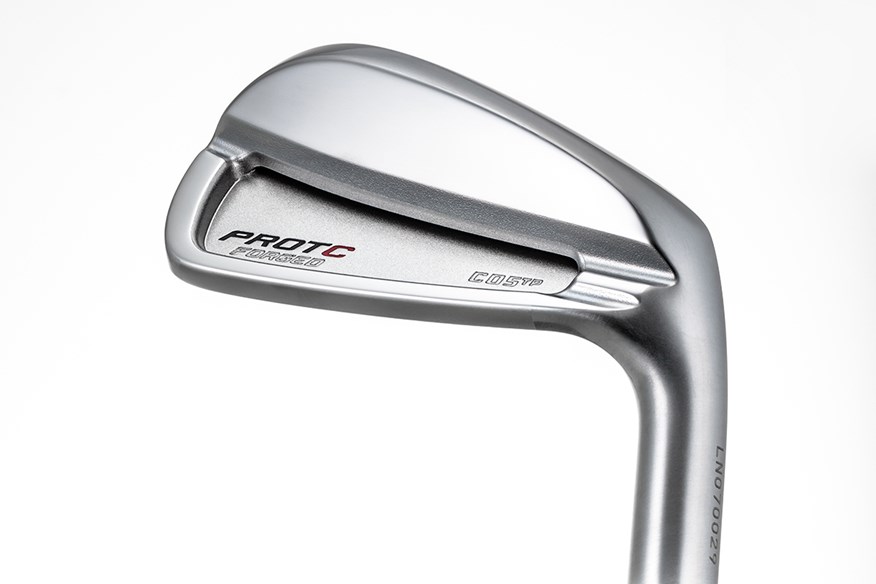

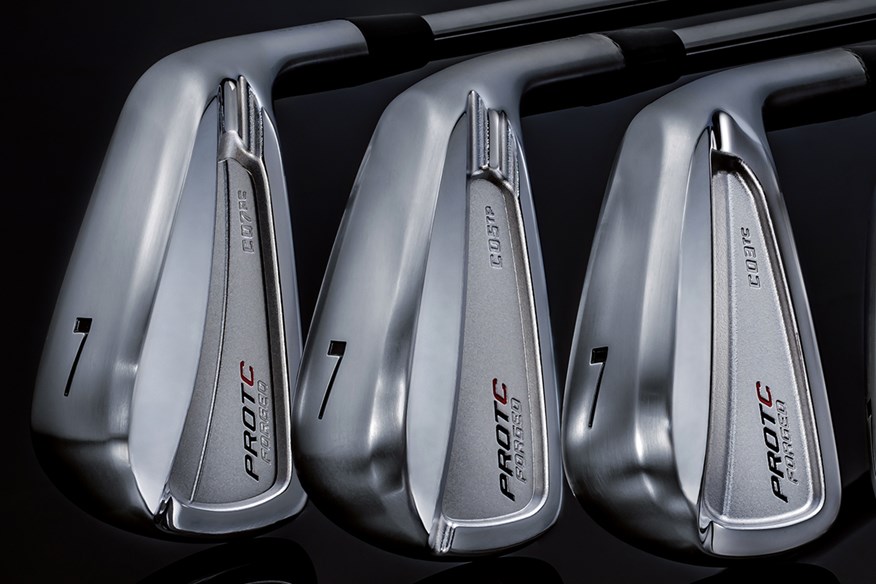
The C05TP is ProtoC’s step into the Players distance category, offering a more unique design than just a lower Center of Gravity position for forgiveness and distance. There’s not much offset here, and a more cambered sole (similar to the latest edition of TaylorMade’s P790).
These factors make the C05 much more playable for a variety of golfers, from the more advanced golfer looking for some extra distance without it costing them looks, to the higher handicap who wants more versatility than a Game Improver can offer.
Ultimately, it’s a very consistent iron in its metrics, even if they aren’t always the very, very top of the class within the Players distance category.
What our tester says:
This is such a different iron compared to the other options in the category. It looks similar to the others, but I think this could be a really great option for the person who wants a full set offering help without looking like a distance iron.
Data:
Loft 32º | Clubhead Speed 93.3 MPH | Ball Speed 122 MPH | Carry 175.9 Yards | Spin 5,559 RPM | Launch 17.6º | Height 33.3 Yards | Descent Angle 47.6º | L-R Dispersion 4.8 Yard
| Set Options | 4-PW, GW |
| Stock Shaft | Nippon NS Pro 950 GH / True Temper Dynamic Gold |
| Stock Grip | Golf Pride Tour Velvet |
| Left Handed | No |
A traditional player's distance iron in every sense.
What Wilson very cleverly does though is build some ball speed and distance tech into this forged beauty, they also deck it out in a traditional shiny, highly polished finish that gives a timeless classic appearance. Some golfers will say the finish glares in very bright sunlight but there’s no getting away from the Dynapower Forged blending tech and tradition seamlessly into a single desirable model.
I can’t say the Forged was the fastest or longest in the category, but that doesn’t stop it from offering itself up as a very attractive Players’ Distance package in 2025. Based on the data, I see the Dynapower being a great option for slightly better golfers than those who might be attracted to a TaylorMade P790 or PXG 0311 P. My thinking is the head is pretty compact, and our test pro didn’t feel there was quite as much forgiveness or ball speed protection on offer as a hollow body alternative. Our data also highlights a slightly lower, less hanging ball flight which tends to be desirable for more serious golfers than those just wanting to look the part of a low double-digit handicapper with a great set of irons in their bag.
Costs have sky-rocketed over recent years and where £900 for a set of Wilson irons would have been inconceivable just five years ago, today versus the £1200 plus prices of many of the competition this is a really good solid players’ distance iron option in 2025.
Read our full Wilson Dynapower Forged irons review.
Pros
- Competitively priced in the current market.
- Every bit as good as the top-performing players' distance irons on the market.
- The KBS Tour Lite shaft is of decent quality.
Cons
- The traditional polished chrome finish is a little old hat and prone to glaring in bright sunlight.
| Availability | 5-PW, GW (with custom order 3 and 4 iron) |
| Stock shafts | KBS Tour Lite (s) UST Recoil Dart 75 (g) |
| 7-iron loft | 30.5° |
| Forgiveness rating | 2.5/5 |
| Category | Players' Distance Iron |
Best Forged Mid Handicap Irons 2025
Designed for incredible feel, increased power, and shot consistency.
In the hands of our test pro the slightly weaker Ai300 compared favorably with the Ai Smoke, I believe many club golfers will appreciate the slightly higher spin (343rpm) and steeper descent angle (0.5°) performance of the Apex, especially so at average speeds. Despite a slight loft difference, there’s very little to choose between the two in terms of ball speed or carry distance numbers, so you’ll be leaving nothing on the table whichever way you proceed.
Hopefully, you’re not sat on the fence between the Game Improver Ai300 and Players’ Distance Apex Ai200. If you are our data spells out you can expect to see a 1.2mph slower ball speed, 432 rpm more spin, and a steeper landing angle performance in exchange for 4 yards less 7-iron carry distance by opting for the Ai200.
If distance is your number one priority the Ai300 should then be your first port of call.
Read our full Callaway Apex Ai300 iron review.
Pros
- Super soft feel and sleek design
- Longer shaft to encourage increased club head speed
- Thicker top line to encourage confidence
Cons
- Slightly higher price point than most game improvement sets
| Availability | 4 - PW & AW |
| Stock shafts | True Temper Dynamic Gold Mid 90 (s) UST Recoil Dart (g) |
| 7-iron loft | 29° |
| Forgiveness rating | 3-3.5/5 |
| Category | Mid-Handicap Iron |
Best Forged Golf Irons: Buying Guide & FAQs
How hard is it to hit forged irons?
Traditional forged irons tended to be classic blades with little to no help in terms of launch, distance, or forgiveness. Many modern forged irons, however, manage to pack in design features that make them a little easier to hit. It’s still the case, though, that the most forgiving and easiest-to-hit irons will be bigger cast models, rather than forged.
Are forged irons less powerful?
If a cast and forged iron of exactly the same design and loft were compared side by side, there would be no power loss thanks to using the forged model. However, as forged irons often target better players, who generally are less concerned about adding extra speed and distance to their iron game forged players’ irons typically have weaker lofts.
Weaker lofts equate to less ball speed and carry distance, so forged players’ irons will usually fly less far than players’ distance and mid-handicap irons, this is purely down to their loft difference, not the material.
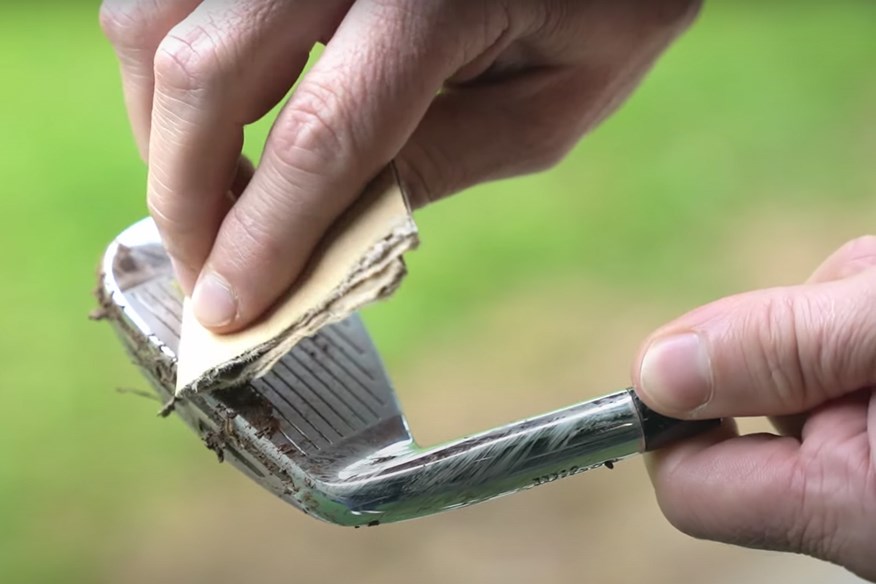
How should I care for a set of forged irons?
As forged irons are often created from steel with a higher carbon content they are more prone to rust than many cast models. If your set gets wet I’d advise taking the time to dry them properly after the round and don’t ever leave them to fester beneath plastic iron protectors or sit in the back of your car.
Taking the time to clean your set (with hot soapy water and a dry cloth) after each round will prolong the life expectancy of your forged irons and help them retain value should you ever want to trade them in against another purchase.
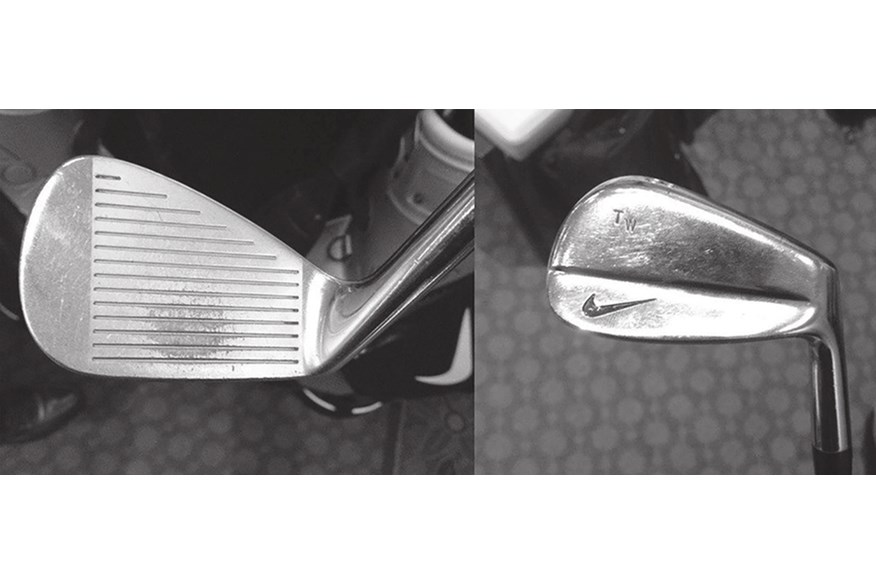
Do forged irons wear more easily?
Most forged irons have a plating coat over their base material to stop them from rusting within a few months of being exposed to the air. If like a tour pro you hit thousands of shots a week it is possible over time to wear spots through the plating in the position you most frequently impact shots.
This isn’t something you really need to worry about if you’re a club golfer, just be aware if you are a serial range goer. Wear spots don’t greatly impact performance, in fact, they’re usually seen as a badge of honor for somebody who practices more than they really should.
Why do so many professionals play forged irons?
Feel, feedback, and sound all play a role in why so many top professionals swear they have to use forged irons, and so too does the shape and smaller size of many forged models. Tour pros are great ball strikers, so it makes perfect sense they’re the people who need the smallest most unforgiving models to hit the same consistent shot shape over and over again.
The bigger heads and wider soles of more cast game improver models would also be more difficult to use at higher skill levels especially when we factor in using them from the tightest of lies and thickest rough.
Join Today’s Golfer for unlimited access to premium content and exclusive rewards!
